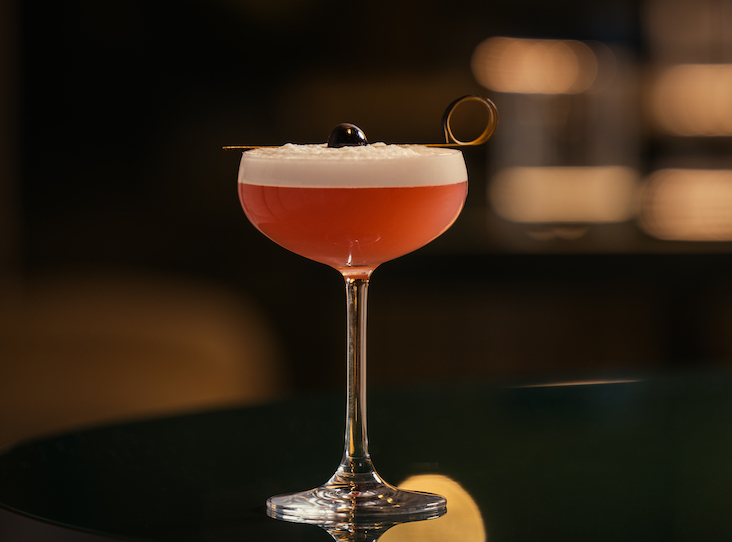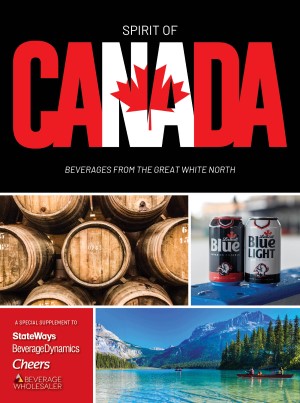As spirits go, it’s arguable that none have more a storied past than those whiskies made in Ireland and Scotland. They still have stories to tell, but these days, the stories are dramatically different.
Scotch whiskey is in the midst of a rear-guard action in the US, fighting to maintain its position as the seventh most-popular spirit. But at the current rate of shrinkage, blended Scotch may lose its spot to cognac and brandy within a few years. Irish whiskey, meanwhile, may be the smallest of the distilled spirits categories, with a tiny 0.3% share of spirits consumed in the US, according to Adams Business Media figures. But from where the Irish stand, things are looking rosy, with double-digit growth in 1999 and a 7% increase in 2000. That growth is especially satisfying when compared to the once indomitable but now consistently shrinking blended Scotch whisky business.
But give the blended Scotch marketers one thing: they don’t give up. Major brands are getting solid support in consumer lifestyle magazines, and younger drinkers are getting the most attention as the image of the drink is being enlivened to appeal to potential new consumers.
MARKETING SAVVY
While single malt Scotch whisky ads tend to focus on tradition, individuality and aspiration, the blended Scotch brand marketers have been aiming for the younger American drinker with a combination of sexy come-ons, contemporary rock music connections that extend to advertising and tour sponsorships, and heavy promotion of the mixibility of the spirit.
Things are rough for the Scotch whisky business, although in 1999, there was a marginal up-tick (1.1%) in sales of the leading foreign-bottled blended Scotches that are also the best-known on-premise brands Dewar’s, Johnnie Walker Red, J&B, Chivas Regal, Johnnie Walker Black, Cutty Sark, Grant’s and Ballantine’s. But dragged down by such brands as Usher’s, Scorseby, Passport and Crawfords, US-bottled Scotches shrunk 1.6%, and the total Scotch business shrank nearly 2.5%.
The preliminary news from 2000 is also not good. The top ten brands, which account for more than 60% of total Scotch sales, dropped by almost 2%. Although offset by gains in other areas, Scotch as a total category is still down 1% for the year. For them, it’s hardly the best of times.
Meanwhile, the money keeps pouring into advertising to stop the bleeding among the top brands. Cutty Sark, now in the hands of the marketing whizzes at Skyy Spirits, has been re-directed away from sailing enthusiasts and toward younger men, with former Playboy Playmates and Penthouse Pets touring the country as rock band companions. Number one seller Dewar’s, rejuvenated by Bacardi’s heavy spending, has countered with a relaunched package, a return of the “Dewar’s Achievers” ads and with a new brand extension, Dewar’s Twelve Year Old.
Meanwhile, number two Johnnie Walker Red has been coasting without much advertising support and lost ground last year, while Johnnie Walker Black has stuck with brand awareness ads and has seen an increase of 6%. J&B marketers have developed a campaign based on quirky, home-made and hand-written ads that were first found in a Midwestern liquor store. They’ve turned them into a full-fledged campaign that focuses on promoting the casual J&B, especially in a connection as a mixed drink with cola, but figures from 2000 appear very bad, with the brand falling off 19%. (All data about 2000 come from the Adams Business Media Handbook Advance, now available.) Grant’s and Ballantine’s mostly stay below the radar in the US these days, depending on international success to buoy the brands.
IRISH EYES
Meanwhile, the Irish boomlet continues and the category, driven by the major players Jameson and Bushmills, has continued to grow in the high single digits or double digits in recent years.
While it’s hard to imagine Irish whiskey being as popular in the US as blended Scotch whisky, there was a time in the 20th century when Irish was THE imported whiskey, But after Prohibition, it began to fade and when US soldiers came back from the UK after from WWII, they returned with a taste for the smokier and earthier Scotch. Irish whiskey continued to fade until there were only five major distilleries left in the country by the 1960s and as of today, of the brands imported to the US, six of the top five come from one of two distilleries owned by the Irish Distillers Group, a subsidiary of Pernod-Ricard.
Category leader Jameson has recently rolled out a massive ad campaign supporting the brand as a youthful, international spirit. The “What’s The Rush?” campaign has been appearing in male-oriented magazines like GQ, Maxim, and Out, focusing on drinkers relaxing in bars in various international cities. Jameson is also seeing growth in Jameson Gold and Jameson 1780.
Bushmills has been quieter, sticking to seasonal promotions, like the “Bush and Brew” shot-and-beer program in on-premise accounts during the St. Patrick’s Day period. Allied Domecq’s Tullamore Dew has experienced steady growth and recently introduced a 12 year old aged in bourbon and oloroso sherry casks. The brand has hitched its fortunes to rugby as the official sponsor of US Rugby as part of its “Rough Country, Smooth Whiskey” campaign.
Two brands from independent Cooley Distillery distributed by Heaven Hill are moving to the fore. Kilbeggan, a patent still blended whiskey, is being promoted, like Tullamore Dew, as all-Irish. Tyrconnel, a pure pot still, single-malt whiskey, is being supported by a push to increase trade awareness. Importer Heaven Hill has been focusing on brand awareness among spirit fans, especially on reviews by spirits writers.




